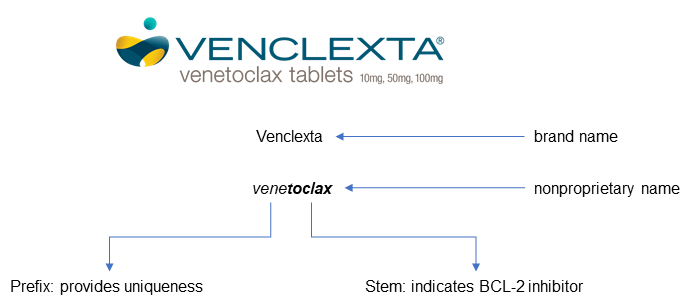Nonproprietary naming
What is a nonproprietary name?
Nonproprietary (a.k.a. generic) names identify small molecule and biologic drugs throughout their lifecycle.
The assigned names build upon precedents and conventions in an ever evolving taxonomy to
express similarities and differences among drug substances. Those "in the know" can tell what
a drug treats, how it acts, what drugs it's related to, or what it's made of
simply by looking at its name.
Good names are crafted through a mixture of science and art.
They can be informative, distinctive, memorable and harmonious. They can also indicate differences
among drugs when supported by science.
You can bring a drug to market without a brand name, but not without a nonproprietary name.
How it Works
Most nonproprietary names are built from "stems," or blocks of letters imbued with meaning.
Stems most often finish the name, but are occasionally found at the beginning or middle. The stem
typically confers information about a drug's activity, therapeutic target, structure, or chemical
composition. Letters added to the stem are chosen to distinguish the product from other products
bearing the same stem, as well as brand or nonproprietary names that might look or sound similar.
How, When, and Why?
Products are eligible to receive a nonproprietary name from the USAN Council (U.S.) or INN Committee (WW)
once they begin human clinical trials. Companies often seek a name when the product is in Phase II testing.
The process takes a year at minimum, but can go much longer if the rationales for the chosen names are not well communicated and defended.
Working with an expert naming advocate can help avoid pitfalls and make the process move smoothly and strategically.

